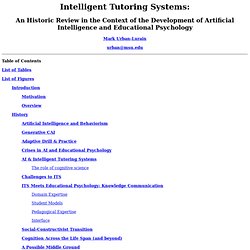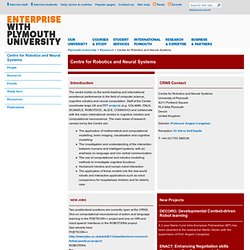

Art & Design without Frontiers. Rate This Share this: Like this: Related posts Leave a Reply Follow Get every new post delivered to your Inbox.

Join 177,654 other followers Build a website with WordPress.com Add your thoughts here... Cancel %d bloggers like this: Blue Pink Lines. Design. 49 Tote Bag for Sale by Elisa Sanacore (18" x 18") Acquarium. Design. 48 by Elisa Sanacore. Black Yellow Abstract View. Design. 42 by Elisa Sanacore. Low Light. Design 34. Black Background Diagonal Lines by Elisa Sanacore. Elisa Sanacore Painting. Elisa Sanacore Painting on Vimeo. Generative Science.
Intelligent Tutoring Systems: Mark Urban-Lurain urban@msu.edu Table of Contents List of Tables List of Figures Introduction Motivation Overview History Artificial Intelligence and Behaviorism Generative CAI Adaptive Drill & Practice Crises in AI and Educational Psychology AI & Intelligent Tutoring Systems The role of cognitive science Challenges to ITS ITS Meets Educational Psychology: Knowledge Communication Domain Expertise Student Models Pedagogical Expertise Interface Social-Constructivist Transition Cognition Across the Life Span (and beyond) A Possible Middle Ground Conclusion References List of Tables Table 1: ACT* assumptions and related principles for a computer-implemented tutor.

List of Figures Figure 1: Basic issues in knowledge communication Introduction Motivation Although the average performance and student ratings of the course have improved over its predecessor, the dispersion of these measures is as great as or greater than it had been in the past. Modularize the curriculum. Overview History Generative CAI. Wpweb2.tepper.cmu.edu/jnh/ai.txt. A Postmodern Critique of Artificial Intelligence J. N. Hooker Revised March 1990 Working Paper 56-88-89 Graduate School of Industrial Administration Carnegie Mellon University Pittsburgh, PA 15213 Bitnet jh38@andrew.cmu.edu Abstract I argue that the "postmodern" understanding of language that has developed over the last few decades in Anglo-American philosophy provides the basis for a useful critique of artificial intelligence.
This postmodern view corrects an error in the traditional Western conception of language that has led many researchers in AI and cognitive science into taking a rule-based or information-processing approach. Wittgenstein's view that language does not receive its meaning through definition, and Quine's view that neither words nor sentences but only discourse as a whole is the proper unit of meaning, argue against an attempt to formulate rules for understanding language, which is an essential part of "strong" AI. Artificial Intelligence. Introduction › cross-links to AI Context The PRL project aims to naturally express the reasoning of computer scientists and mathematicians when they are justifying programs or claims.
It represents mathematical knowledge and makes it accessible in problem solving. These goals are similar to goals in AI, and our project has strong ties to AI. We want to examine these ties in this section. We see AI as having a definite birth event and date: the Dartmouth Conference in the summer of 1956 organized by John McCarthy and Marvin Minsky. According to many AI researchers, they have set the agenda for a large part of Computer Science in the sense that AI successes seeded separate research areas of CS, some no longer even associated with AI.
It is clear that our project has benefitted substantially from AI research, and that will continue. One way to describe AI is to see it as an attempt to explain aspects of human intelligence computationally. Knowledge Representation Natural Language Processing. Free online courses: Artificial Intelligence - Page 1 - OCW Search.
ROBOTIC. Centre for Social Robotics. DRDO. Centre for Robotics and Neural Systems. Cognitive Robotics Research Centre. Centre for Robotics and Neural Systems (CRNS) Centre for Robotics and Neural Systems TextML Introduction The centre builds on the world-leading and international excellence performance in the field of computer science, cognitive robotics and neural computation.

Staff at the Centre coordinate large UK and FP7 projects (e.g. COLAMN, ITALK, SCANDLE, ROBOTDOC, ALIZ-E, COGNOVO) and collaborate with the major international centres in cognitive robotics and computational neuroscience. The application of mathematical and computational modelling, brain imaging, visualisation and cognitive modellingThe investigation and understanding of the interaction between humans and intelligent systems, with an enphasis on language and non verbal communicationThe use of computational and robotics modelling methods to investigate cognitive functionsHumanoid robotics and human-robot interactionThe application of these models into the real-world robotic and interactive applications such as robot companions for hospitalised children and for elderly care. tba.